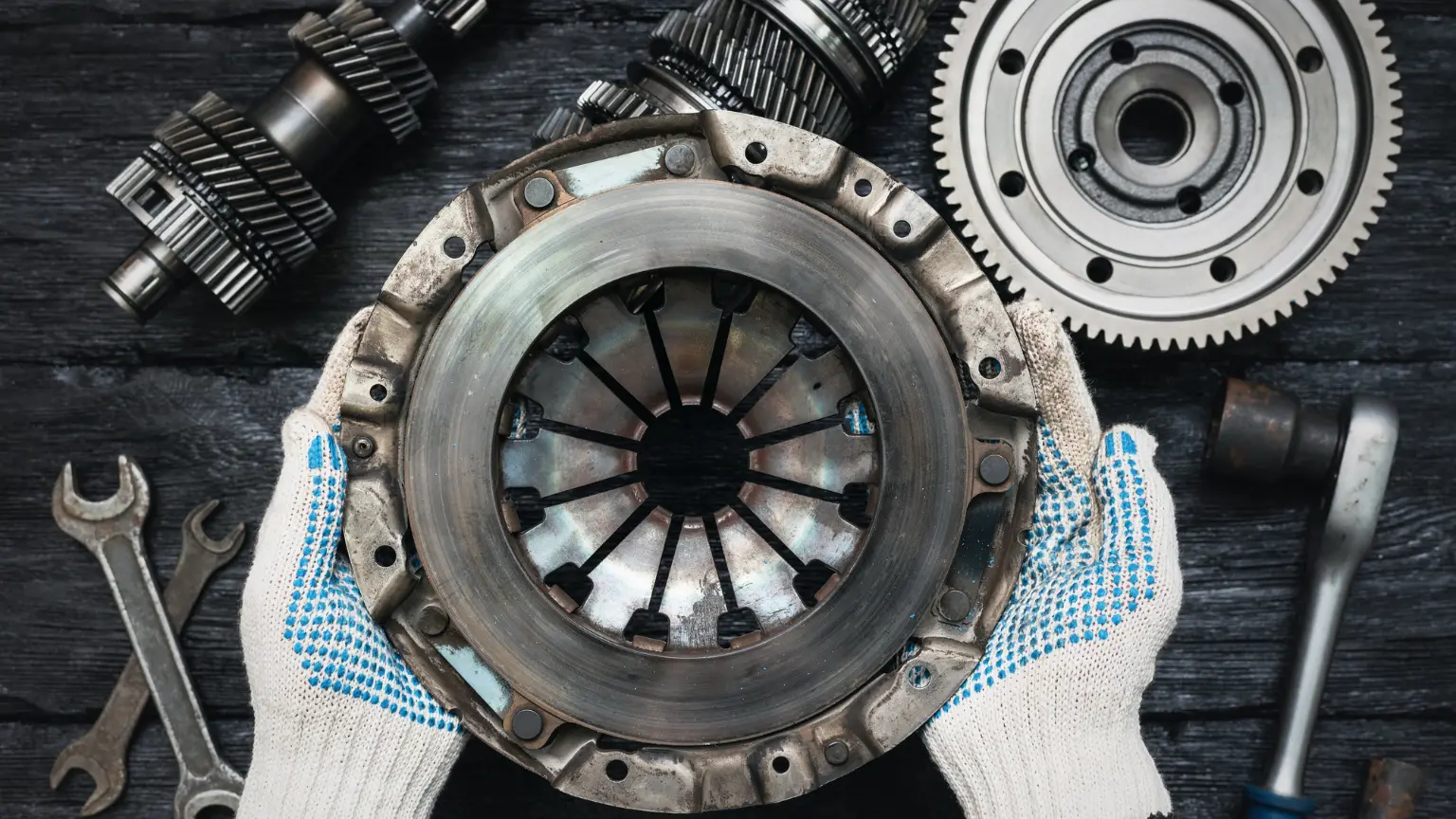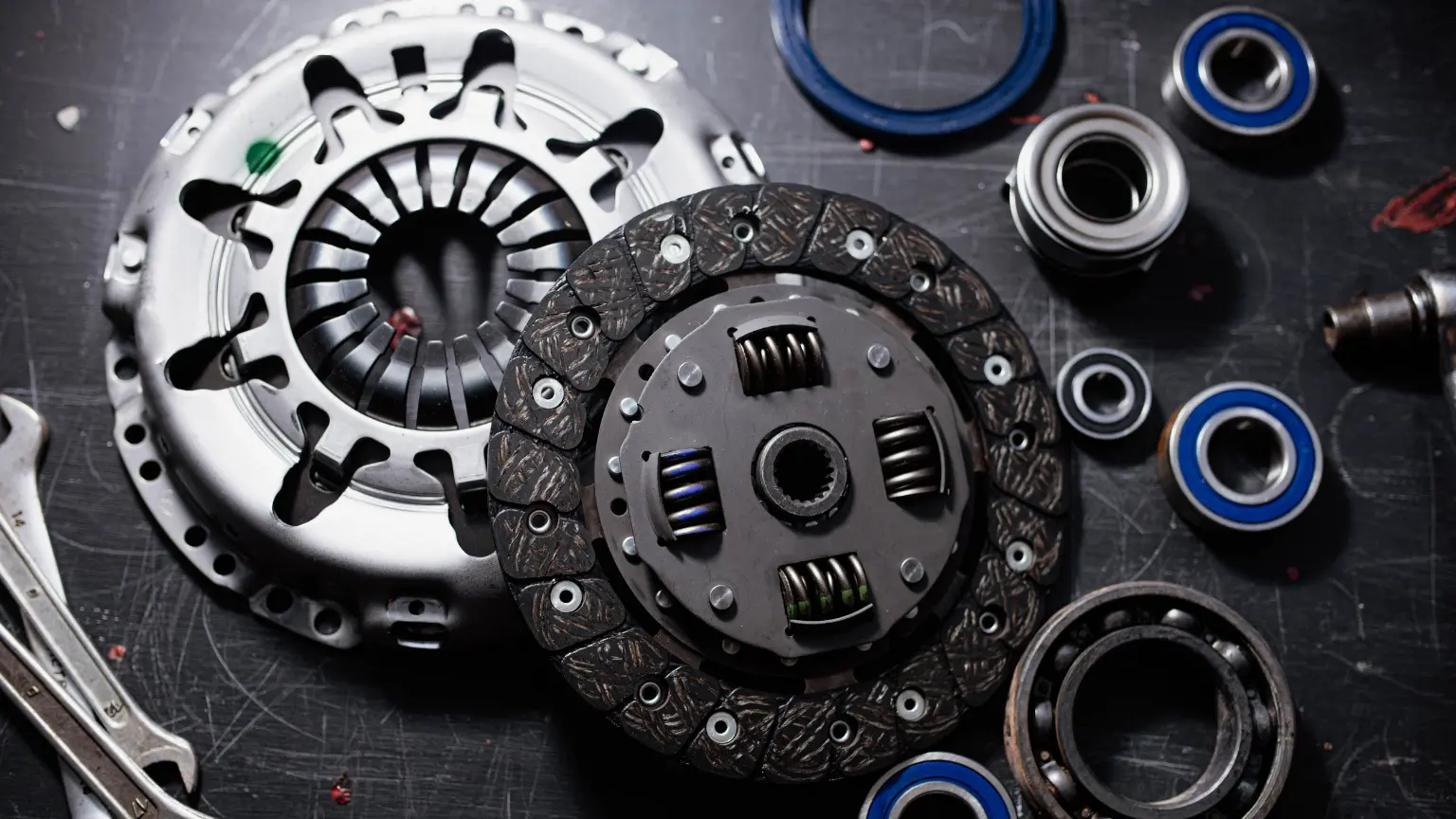Common Transmission Problems & Their Fixes
Understand common transmission issues—slipping gears, erratic shifts, fluid leaks, and noises—and learn diagnostic steps, repair tips, maintenance advice, and when to rebuild versus replace.

The transmission in a vehicle is a critical component, acting as the powerhouse that transfers the engine's power to the wheels. Essentially, it ensures that your car can move at different speeds. The transmission, whether manual or automatic, adjusts the gear ratios, enabling the vehicle to run efficiently without overburdening the engine. Common transmission problems can significantly impact this process, leading to a noticeable decrease in performance and reliability. Understanding the basics of how your transmission works is the first step in recognizing and addressing these issues.
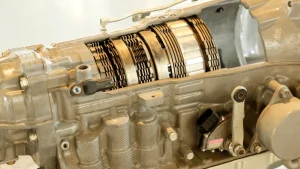
Identifying Common Transmission Problems
One of the most apparent signs of transmission trouble is when gears slip. This common gearbox problem manifests as a sudden change in pitch or gear, often accompanied by a noticeable loss of power. It feels as if your vehicle is struggling to maintain or change speeds appropriately. This issue not only disrupts your driving experience but also signals underlying problems within the transmission system. It’s crucial to pay attention to these symptoms as they can escalate quickly, leading to more complex and costly repairs.Delayed or erratic shifting is another hallmark of automatic transmission problem symptoms. When your car hesitates or refuses to go into gear, it's a clear sign something isn't right. This symptom could manifest as a delay in acceleration after shifting, or unexpected jerking movements during gear changes. These issues are not just inconvenient; they can be safety hazards, especially when driving in traffic or at higher speeds. Recognizing these signs early can save you from potential accidents or more severe transmission damage.Transmission fluid is the lifeline of your transmission system. Detecting leaks is critical in maintaining its health. A leak might present itself as a pool of red fluid under your car or an unusual burning smell while driving. Ignoring transmission fluid leaks can lead to reduced lubrication and cooling in your transmission, causing overheating and severe damage.Unusual noises coming from your vehicle, such as whining or clunking, are often indicators of common transmission issues. A whining sound while accelerating can point to a worn-out transmission pump or low fluid levels, while clunking noises during gear changes may suggest internal components are wearing out. These sounds are not typical and should not be ignored, as they can be early warnings of more serious problems requiring immediate attention.
Exploring Causes and Fixes for Slipping Gears
Minor gear slippage can often be rectified by adjusting the linkage. This component connects the gear shifter to the transmission, and over time, it can become misaligned. Proper adjustment of the linkage helps in restoring the correct positioning, therefore reducing the likelihood of slippage. This is a relatively straightforward fix that can be done by a transmission specialist or those with a bit of mechanical know-how. However, it's important to ensure that the adjustment is precise to avoid further complications.In cases of major gear slippage, a more comprehensive approach might be necessary, such as a transmission rebuild. This process involves dismantling the transmission, repairing or replacing worn-out parts, and reassembling it. It's a complex task that should be carried out by experienced professionals. A transmission rebuild can often restore the transmission to its optimal condition, providing a more cost-effective solution than a complete replacement. By regularly visiting a specialized transmission shop, car owners can prevent serious mechanical issues and costly repairs. Here's a look at the critical steps performed by certified mechanics during a transmission inspection:
- Diagnostic Analysis: Mechanics utilize sophisticated diagnostic tools to conduct an in-depth analysis of the transmission. This process helps identify problems that are not visible during routine inspections or manifest through normal driving. These tools can detect minute discrepancies in transmission behavior and fluid characteristics, flagging early signs of wear or damage that could lead to significant failures if unaddressed. This proactive approach allows for timely interventions, potentially saving car owners from expensive overhauls or replacements.
- Component Assessment: During this phase, mechanics focus on the mechanical integrity of critical transmission components. The torque converter, for example, is examined for its efficiency in transferring engine power to the transmission. Gears are checked for proper alignment and signs of undue wear or damage, which are crucial for smooth shifting and vehicle performance. This thorough assessment ensures that all components function together seamlessly, preserving the transmission's overall health and ensuring reliable operation under various driving conditions.
- Module Checking: This step involves scrutinizing the transmission control module (TCM), which governs the timing and execution of gear shifts based on driving conditions and vehicle load. Mechanics look for error codes that indicate electrical or data-related issues within the system.
- Maintenance Tasks: Regular maintenance is vital for sustaining the transmission’s operational efficiency and prolonging its lifespan. This typically includes replacing the transmission filter to ensure clean fluid circulates through the system, which is crucial for preventing clogs and reducing wear on moving parts. Flushing the transmission fluid is also a common practice; it removes old, contaminated fluid and debris that can accumulate over time, thus maintaining the quality and performance of the transmission fluid.
Regular professional inspections are more than a preventative measure; they are an investment in the vehicle's longevity and safety.
Solutions for Delayed or Erratic Shifting
Inadequate fluid levels can lead to insufficient hydraulic pressure, which is essential for the operation of the transmission. Without adequate pressure, the transmission may struggle to engage gears properly, leading to jerky or slipping gear shifts. If the fluid is dirty or has a burnt smell, it may need to be replaced. If the fluid turns dirty or emits a burnt smell, this is a clear indicator that it needs to be replaced. Fresh fluid maintains the necessary lubricating properties and can handle the high temperatures inside the transmission without breaking down. Regular monitoring of fluid levels as part of routine maintenance can significantly reduce the risk of shifting problems.Modern vehicles incorporate a complex network of sensors and solenoids that play a critical role in managing transmission functions. Sensors gather data on various parameters such as speed, temperature, and engine load, which are essential for the transmission control module (TCM) to determine the optimal timing for gear shifts. Solenoids, on the other hand, are actuated by the TCM to control the flow of hydraulic fluid to different transmission parts, facilitating or inhibiting gear shifts accordingly. When these components are functioning correctly, they ensure that the vehicle's transmission operates smoothly and efficiently. Diagnosing and repairing or replacing faulty sensors or solenoids is a critical step. This process typically requires specialized diagnostic tools and should be handled by a qualified transmission specialist. Addressing these electrical components can restore proper transmission function and ensure smooth gear shifts.In today’s vehicles, the transmission's operation is often governed by a computer system. Ensuring this system functions correctly is crucial for avoiding shifting issues. A malfunctioning transmission computer can lead to erratic shifting patterns and should be diagnosed using advanced diagnostic equipment. In some cases, a software update or reprogramming may resolve the issue. Regular transmission service that includes computer diagnostics is essential for maintaining optimal transmission performance.Staying up-to-dateof manufacturer recalls and software updates can prevent common faults and extend the lifespan of the transmission. Vehicle owners can enhance the performance of their transmission systems, ensuring smoother operation and greater vehicle longevity.
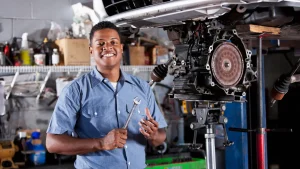
Addressing Transmission Fluid Leaks
The initial step in tackling transmission fluid leaks is pinpointing the exact location of the leak. This process involves a thorough examination of the transmission system. Pinpointing the source is vital because it determines the subsequent repair strategy. Early identification of leaks is crucial for preventing more severe transmission damage. When addressing transmission fluid leaks, it’s important to methodically seal and repair common leak points. Here's a step-by-step approach:
- Inspect the Transmission Pan Gasket: Over time, exposure to heat and transmission fluid can cause the gasket to deteriorate, making it brittle and ineffective. During inspection, look for any signs of cracks or breaks. If the gasket appears worn or damaged, replacing it is crucial to prevent further leakage.
- Examine the Fluid Lines: Fluid lines are responsible for transporting transmission fluid throughout the system. These lines, typically made of metal or flexible hoses, can crack, corrode, or loosen over time due to vibrations, temperature changes, and exposure to road chemicals. It is essential to ensure that these lines are intact and securely fastened.
- Check Seals Around the Torque Converter: The torque converter, an essential component of the transmission, relies on seals to prevent fluid leaks. These seals can degrade over time due to regular wear and exposure to contaminants. Inspecting these seals involves checking for any signs of wear or deterioration.
- Evaluate the Transmission Cooler and Its Lines: The transmission cooler helps to manage the temperature of the transmission fluid, thus extending the life of the transmission. The cooler and its associated lines are also susceptible to leaks. During evaluation, make sure that the cooler is in good condition and that its lines are securely connected.
- Assess the Transmission's Front and Rear Seals: The front and rear seals of the transmission are critical for preventing fluid from leaking out of the transmission case. These seals can become worn due to age or exposure to extreme conditions.
Each of these steps is crucial in effectively sealing and repairing leak points, thereby maintaining the transmission's integrity and functionality. Regular checks for leaks and timely repairs are essential in preserving the health of your vehicle’s transmission, ultimately contributing to a smoother and safer driving experience.
Deciding Between Transmission Repair and Replacement
When facing significant transmission issues, one of the crucial decisions is whether to repair or replace the transmission. This decision largely rests on a cost-benefit analysis. Repairing might be more cost-effective for minor issues, but for extensive damage, replacement could be more economical in the long run. It's important to consider not only the immediate costs but also the potential future expenses associated with ongoing repairs. Environmental factors should also be considered. Newer transmissions are typically more efficient and environmentally friendly. They are designed to offer better fuel economy and reduced emissions, aligning with modern environmental standards. Choosing to replace an old transmission with a newer model can thus not only improve vehicle performance but also contribute to environmental sustainability. Consulting with a transmission specialist who understands both the mechanical and environmental aspects of the trade can provide insights into the most up-to-date solutionsThe age of your vehicle and the severity of the transmission damage play significant roles in deciding between repair and replacement. Older vehicles with high mileage might not justify the cost of a full transmission rebuild or replacement, especially if the vehicle’s value is lower than the repair cost. For newer vehicles or those with severe transmission damage, replacing the entire unit might be more beneficial to ensure reliability.
The Importance of Regular Transmission Maintenance
Regularly checking and flushing the transmission fluid is fundamental to maintaining a healthy transmission. These routine checks help ensure that the fluid is clean, at the correct level, and not contaminated. Contaminated or old fluid can lead to a variety of transmission problems, including overheating and gear slippage. Flushing and replacing old fluid can significantly extend the life of your transmission.Early diagnosis of transmission problems is crucial in preventing serious damage. As emphasized before, paying attention to early warning signs can lead to quick interventions, averting more severe issues. These proactive steps are vital in maintaining the transmission's health and avoiding the need for extensive and expensive repairs.
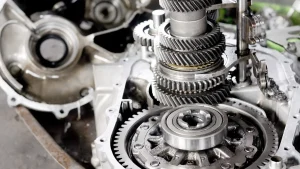
The health of your vehicle's transmission is pivotal to its overall performance and longevity. Regular inspections and maintenance, carried out by experienced transmission specialists, are essential. Being proactive about transmission repair and understanding when to opt for more comprehensive solutions like a transmission rebuild are critical aspects of vehicle care. Remember, addressing issues early can save you significant time and expense in the long run. Trusting professionals at a transmission shop and adhering to regular transmission service schedules will ensure that your vehicle remains reliable and efficient on the road.
Follow a maintenance program
Ante gravida id aenean quis egestas risus nam amet nullam leo diam diam aliquam eu eu malesuada arcu rhoncus suspendisse nulla mattis ut amet sagittis in justo egestas.

search for a trusted mechanic
Lorem ipsum dolor sit amet, consectetur adipiscing elit lobortis arcu enim urna adipiscing praesent velit viverra sit semper lorem eu cursus vel hendrerit elementum morbi curabitur etiam nibh justo, lorem aliquet donec sed sit mi dignissim at ante massa mattis.
- Neque sodales ut etiam sit amet nisl purus non tellus orci ac auctor
- Adipiscing elit ut aliquam purus sit amet viverra suspendisse potent
- Mauris commodo quis imperdiet massa tincidunt nunc pulvinar
- Excepteur sint occaecat cupidatat non proident sunt in culpa qui officia
Check the air pressure in your tires
Vitae congue eu consequat ac felis placerat vestibulum lectus mauris ultrices cursus sit amet dictum sit amet justo donec enim diam porttitor lacus luctus accumsan tortor posuere praesent tristique magna sit amet purus gravida quis blandit turpis.
Review your suspension frequently
At risus viverra adipiscing at in tellus integer feugiat nisl pretium fusce id velit ut tortor sagittis orci a scelerisque purus semper eget at lectus urna duis convallis. porta nibh venenatis cras sed felis eget neque laoreet suspendisse interdum consectetur libero id faucibus nisl donec pretium vulputate sapien nec sagittis aliquam nunc lobortis mattis aliquam faucibus purus in.
- Neque sodales ut etiam sit amet nisl purus non tellus orci ac auctor
- Adipiscing elit ut aliquam purus sit amet viverra suspendisse potent
- Mauris commodo quis imperdiet massa tincidunt nunc pulvinar
- Excepteur sint occaecat cupidatat non proident sunt in culpa qui officia
Service your vehicle as regularly as posible
At risus viverra adipiscing at in tellus integer feugiat nisl pretium fusce id velit ut tortor sagittis orci a scelerisque purus semper eget at lectus urna duis convallis. porta nibh venenatis cras sed felis eget neque laoreet suspendisse interdum consectetur libero id faucibus nisl donec pretium vulputate sapien nec sagittis aliquam nunc lobortis mattis aliquam faucibus purus in.
“Nisi quis eleifend quam adipiscing vitae aliquet bibendum enim facilisis gravida neque velit euismod in pellentesque”
Conclusion
Eget lorem dolor sed viverra ipsum nunc aliquet bibendum felis donec et odio pellentesque diam volutpat commodo sed egestas aliquam sem fringilla ut morbi tincidunt augue interdum velit euismod eu tincidunt tortor aliquam nulla facilisi aenean sed adipiscing diam donec adipiscing ut lectus arcu bibendum at varius vel pharetra nibh venenatis cras sed felis eget.

